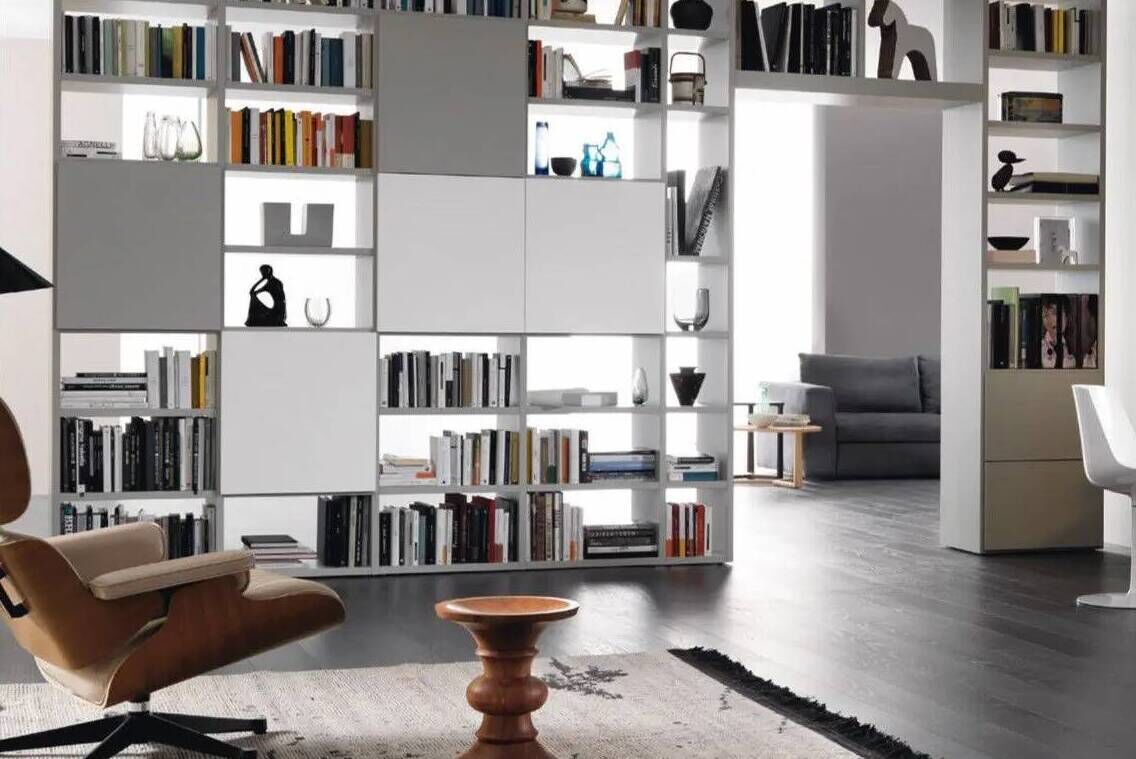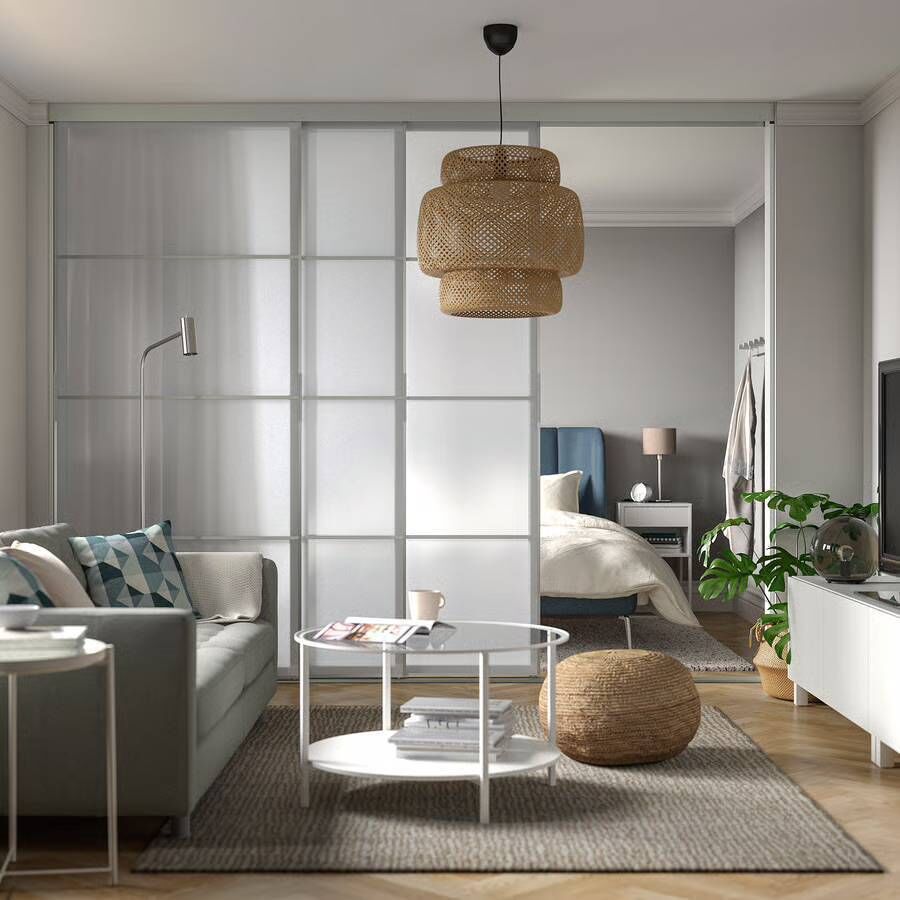Jennifer Sheahan: How to turn one room into two

The Sangiacomo freestanding bookshelf provides storage and effective room partitioning.
Open-plan living has had a very long day in the sun, and for good reason — it maximises light, creates a sense of space, and encourages social interaction. But sometimes life demands a little more separation. Maybe you’re working from home more often and need a private office. Perhaps you want a cosy reading nook, a playroom for the kids, or even an extra sleeping space for guests.
Whatever the reason, turning one room into two can sometimes be the right answer to make the best use of your living space. Building an internal partition wall is the obvious way to do it, but not the only one. Here are a few creative, affordable, and even some DIY-friendly ways to carve out distinct zones without sacrificing light, flow, or style.
The primary consideration with any dividing structure is maintaining safe access, good lighting, and flow. Before you start planning, take a long look at how you use the space and where the natural light comes in. You need to make sure you’re not blocking off a window and plunging the remaining space into darkness. You’ll want to maintain as much daylight as possible, which is why solutions like sliding doors, glazed panels, or even ceiling-mounted curtains may be an alternative to a partition wall.
Think about access, too. Where are your main walkways, and could a partition interfere with how you move through the room? Whatever solution you choose, the golden rule is not to choke the space. Allow at least 80cm for walkways and more if you can. If you’re splitting a room that’s already small, avoid anything too bulky — thin panels, glazed screens, or fabric dividers will help maintain a sense of openness.

Always think about how the room will feel when both zones are in use at the same time. Can two people comfortably move around without bumping into each other? If not, rethink your plan.
If you want to permanently divide the room, a partition wall is the way to go. This will also give you the option to add electrics such as sockets and wall lights, and soundproofing if that’s something you need. Planning permission is generally not required, unless your home is listed, though the wall will need to meet local building standards.
Installing a partition wall is usually a very straightforward job, which unfortunately often means it falls into the “too small to bother” bucket for many contractors. Even if you can get someone to do it, they can be surprisingly expensive once you factor in materials, labour, and making good on floors and ceilings. So it’s worth exploring lighter-touch solutions first — especially if your needs might change in a few years.
If you love the idea of being able to close off a space completely when needed, but keep it open at other times, then consider sliding doors. Barn doors on exposed tracks are super easy to install and give a gorgeous rustic vibe. You can install ceiling-mounted tracks so there is minimal construction work required —if you’re handy, this is not a difficult DIY job.

Slim-panel doors on discreet floor and ceiling rails are another great option that gives a more modern look. These are effectively sliding wardrobe doors that you can install in the middle of your room. Note, you will have a visible track on the floor, but these are usually quite flat and unobtrusive. For an affordable DIY option, check out Ikea Skytta sliding doors.
Even if you do install a partition wall, walls need doors, and if you’re tight on space, then the ultimate space saver is a pocket door that disappears into the wall when open. This will incur additional cost, and you’ll need to make sure your wall can be thick enough to accommodate the cavity, but it is worth it in my opinion!
I was fundamentally opposed to curtains as room dividers until I came across photos of internal curtains in one of Rose Uniacke’s books. Everything that woman does is perfection, and the photo swung me 180 degrees towards being now fully obsessed with internal curtains as dividers.
Floor-to-ceiling panels in a gorgeous fabric add texture and warmth. When drawn, they create instant privacy; when open, they practically disappear. This solution is particularly handy for bedrooms that double as workspaces — draw the curtain during office hours to create a “room within a room” and open it up in the evening.
Curtains are also excellent for maintaining light and flow, as you can choose semi-sheer fabrics to let daylight filter through. Installing internal curtains is an easy DIY job — simply install a ceiling-mounted curtain rail, ensuring it’s sturdy enough to bear the weight of your chosen fabric.
Sometimes the smartest way to split a room is to make the divider do double duty. A floor-to-ceiling freestanding wardrobe or shelving unit can act as a partition while providing much-needed storage.
If you’re using shelving, you can opt to keep it open to allow light to pass through, or if you need more privacy, choose a solid back. Just be sure to secure heavy pieces to the floor or ceiling for safety. Unlike curtains or sliding doors, shelving can be used to add additional soundproofing if needed. A shelving unit with some gorgeous curtains can be a perfect combination to provide storage, style, and flexibility.













